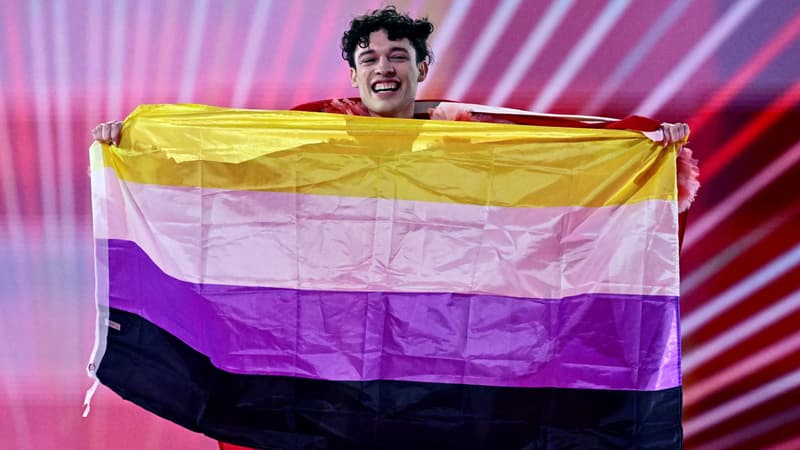A flag that intrigued some spectators. The Swiss artist Nemo, who won the 2024 edition of Eurovision on Saturday, May 11 in Sweden, took the stage with a four-striped flag, very different from the white cross on a red background that represents his country, during the inaugural parade of the contest. . But what does this flag mean?
The flag, in yellow, white, purple and black, is that of the non-binary community, whose members do not recognize themselves as men or women. If Nemo decided to exhibit it, it is because the artist identifies as non-binary. This is also the first time that a person in this case has won the contest.
This flag is different from the rainbow flag, red, orange, yellow, green, blue and purple, better known to the general public and which symbolizes the entire LGBT+ (lesbian, gay, bisexual and transgender) community. It was designed for the 1978 San Francisco Gay Pride Parade.
The Swiss artist praised the tradition of tolerance that characterizes the Eurovision contest. “It is a world in itself (…) very happy and colorful, a world in which I feel safe,” Nemo greeted.
A “smuggled” flag
The European Broadcasting Union (EBU), which oversees the contest, usually bans any flag other than that of the participating countries and, in particular, any banner with a political message.
“I had to hide my flag,” Nemo said. “Eurovision needs to change a little” how it works, the artist then estimated.
The competition, followed by tens of millions of viewers around the world, periodically appears as a showcase for the LGBTQ+ community. The bearded Austrian drag queen Conchita Wurst, winner in 2014, or the French candidate Bilal Hassani in 2019, entered its annals.
Source: BFM TV


